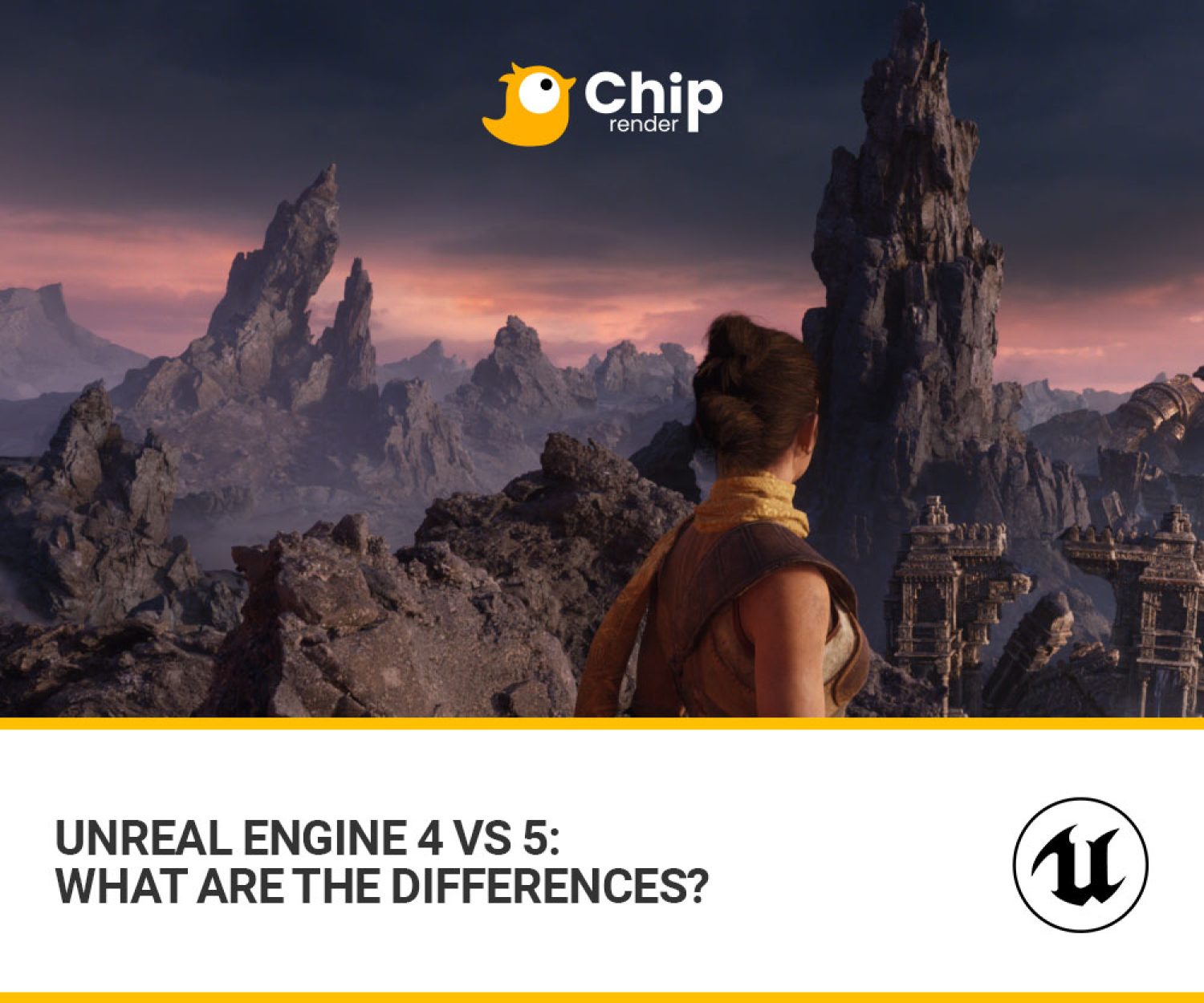If you are new to game production, you may be overwhelmed by the number of software available. Epic Games has recently released Unreal Engine 5.3, which provides more functionality than Unreal Engine 4 for game developers, virtual artists, and filmmakers. Therefore, the decision of choosing between Unreal Engine 4 and Unreal Engine 5 is usually difficult. Today, Chip Render will find out four differences between Unreal Engine 4 vs 5 to see which one is ideal for your projects.
Understanding of Unreal Engine
1. What is Unreal Engine software?
Unreal Engine is a powerful game engine that is widely used for developing video games. The Unreal Engine is a AAA gaming engine that represents firms that create popular games across the globe. In 1988, Unreal Engine was released by Epic Games. Unreal Engine has made it feasible to create high-definition graphics since its beginnings.
2. What is Unreal Engine used for?
In fact, Unreal Engine has helped 3D artists to create many impressive games over the years. Furthermore, Unreal Engine 5 enables game developers to advance their creations to the next level. Since its introduction, it might bring advancements in numerous fields such as:
- Games
- Film and Television
- Architecture.
- Automotive and Transportation.
- Broadcast and live events.
- Simulations, and more.
Four Differences between Unreal Engine 4 and 5
When comparing Unreal Engine 4 with Unreal Engine 5, there are numerous differences. Both have enormous potential, Unreal Engine 5 builds on Unreal Engine 4‘s creative capabilities and provides a completely new experience in creating more projects.
1. Unreal Engine 4 vs 5: Performance
In fact, Unreal Engine is well-known for its high performance and ability to produce nice images in real time. Also, Its arrival has excited game developers and enthusiasts.
In 2014, Unreal Engine 4 was released and established new norms for real-time visuals and performance. The concept introduces a rendering pipeline, effective management, and several optimization strategies. Also, Unreal Engine 5 represents a big step forward in real-time graphics. Moreover, it improved lighting and shadow effects, and increased post-processing.
2. Unreal Engine 4 vs 5: Dynamic lighting
Lighting in Unreal Engine 4 is being widely used to create realistic lighting effects in games. Therefore, lighting tools and techniques such as dynamic global illumination, and light mass create beauty in landscapes and game environments. In addition, lighting requires careful consideration in creating attractive lighting spaces for gaming experiences.
It allows for precomputed lighting, where static lighting data can be incorporated into the light map.
The introduction of Lumen, a global lighting system in Unreal Engine 5, enhances dynamic lighting capabilities. With Lumen, all lighting is automatically optimized and real-time.

Lumen in UE5 (Image source: Unreal Engine)
3. Unreal Engine 4 vs 5: User Interface and Experience
Unreal Engine 4 is a powerful gaming engine with an easy-to-use UI and user experience. The interface allows developers to navigate tools and versions. The user experience prioritizes usability and accessibility, enabling developers to focus on game design rather than gameplay and technological complexity. Because Unreal Engine 4 appeared in 2012, its old UI was starting to seem a little “retro”.
However, ten years later, with the release of Unreal Engine 5, the new editor is smarter and sleeker. For this reason, Unreal Engine 5 elevates UI and UX with cutting-edge technology and design. Even more, it modernizes the design which creates a more appealing working environment for developers.

UE 5 Interface (Image Source: Unreal Engine Document)
4. Unreal Engine 4 vs 5: Modeling Tools
With Unreal Engine’s latest update, modeling, sculpting, and UV unwrap tools have now been added.
It is obvious that Unreal Engine 4 is a game shift for the industry. It offers developers sophisticated modeling tools. Next, the Blueprint visual scripting technology allows artists and designers to develop game logic without writing any code. What’s more, the static mesh editor in Unreal Engine 4 enables the effective design of 3D models.
Unreal Engine 5 provides Nanite, a virtualized microphotography technique that enables artists to construct very detailed models. Nanite allows developers to add millions or billions of polygons to their scenes. The modeling tools are useful for working with different types of Actors such as a Static Mesh, a Dynamic Mesh, and Volume as well as.

Image Source: Unreal Engine
Final Thoughts
Should you use Unreal Engine 4 or 5? In fact, the choice between these game engines ultimately depends on your project’s specific requirements.
Both Unreal Engine versions offer special advantages. Your choice will depend on your game’s scope, compatibility, and required features. It’s essential to consider your project’s needs to make a decision.

If your computer is not powerful enough to render Unreal Engine, you can consider Chip Render Farm. It is a friendly CPU & GPU cloud rendering that offers 1/2/4 x GPU RTX 3090 servers for all 3D artists. For Unreal Engine, it only utilizes 1 GPU so we suggest you choose our server single card 3090. Therefore, you can speed up your projects significantly.




